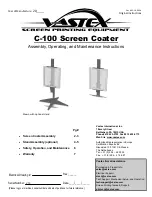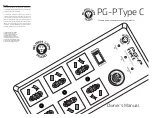
Section 2: Installation and Setup
Mirage S+/HD, Matrix S+/HD, Christie HD/DS+/DW, DLV User Manual
2-19
020-100001-05 Rev. 1 (12-2008)
ArtNet INTERFACE SETTINGS:
Refer to
Section 3.6 – Adjusting System Parameters
and Advanced Control, System Configuration – Communication
for additional
information about ArtNet settings.
By default, communications originating from one type of serial controller—RS232 vs.
RS422 vs. Ethernet—stay on the corresponding network path. A “Separate” setting
indicates this separation for “Network Routing” in the
Communications
menu. If you
are using an RS422 controller, for example, it will communicate only with the
projector to which it is connected unless you change this setting to either “RS232 and
RS422 Joined” or “All Joined”.
To relay all messages to all ports—RS232, RS422, and Ethernet—set the “Network
Routing” option in the
Communications
menu for each projector to “All Joined”. This
configuration is useful if you are using a non-RS232 controller with the RS232 linking
available between these projectors. For example, you may want to use both an RS422-
compatible controller and an Ethernet-connected PC for working with a network of
projectors linked via their RS232 in/out ports.
Figure 2.16. Joining All Networks
To isolate just RS422 communications, select “RS232 and Ethernet Joined”. In Figure
2.16, only projector #3 will respond to the RS422 controller. To isolate just Ethernet
communications, select “RS232 and RS422 Joined”—only projector #1 will respond
via Ethernet.
The GPIO connector on the input panel can be used to provide a method of interfacing
a wide range of external I/O devices to the projector.
Refer to
Appendix E: System Integration
for complete details on pin configuration
and how to program the various pins on the connector.
Separating Networks
Communicating
to
All
Ports
2.5 System
Integration -
GPIO
Connector
















































